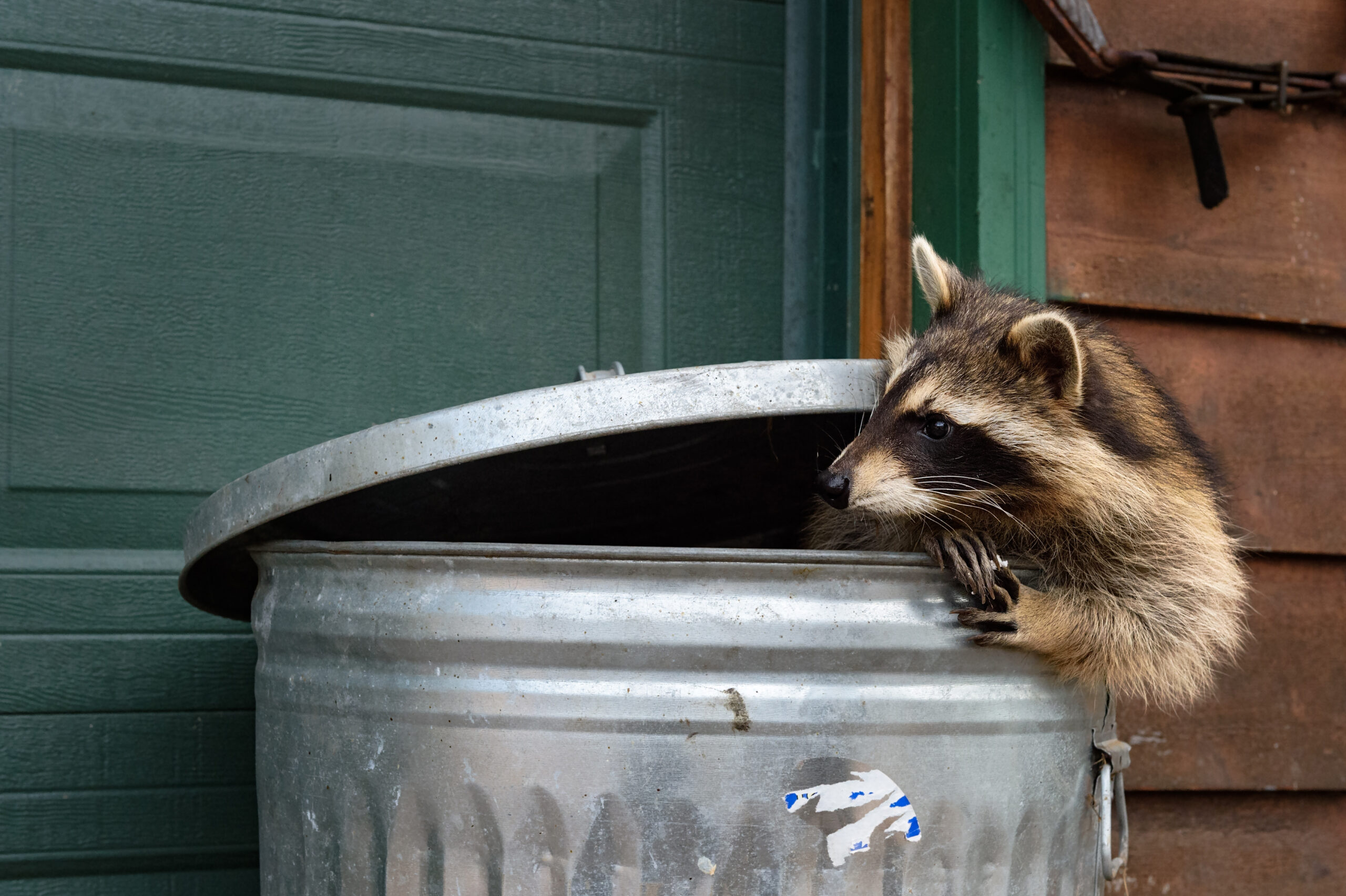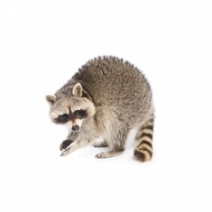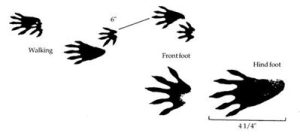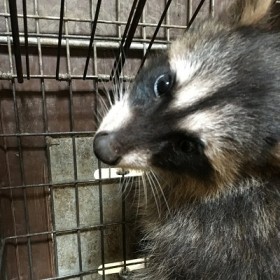
Are you hearing raccoon noises in your attic, finding tracks near your property, or dealing with raccoon droppings?
Raccoons can cause serious property damage, contaminate living spaces, and create fire hazards by chewing through electrical wiring.
We specialize in professional raccoon removal near you, using humane trapping, raccoon exclusion services, and long-term raccoon-proofing solutions.
Signs You Have a Raccoon Problem
Raccoons are nocturnal and leave clear signs of their presence:
Raccoon Sounds in Attic or Walls: Scratching, heavy thumping, chirping, or growling.
District Tracks and Droppings: Hand-shaped footprints near walls, attics, and vents; dark tube-like droppings clustered near nesting sites.
Trash and Property Disturbances: Raccoons are notorious for rummaging through trash.
Why Do Raccoons Enter Homes & Businesses?
Raccoons are looking for food, warmth, and shelter. Common reasons they invade properties include:
Unsecured trash & pet food
Easy food sources attract raccoons.
Attic & chimney shelter
Raccoons prefer warm, safe nesting sites, especially in winter.
Gaps & weak entry points
Raccoons squeeze through vents, crawl spaces, softs, and roofing gaps.
Nearby water sources
Birdbaths, pet bowls, and leaky pipes invite raccoons.
How Do We Get Rid of Raccoons
Our licensed raccoon removal professionals follow a proven process to eliminate raccoons and prevent future invasions:
- Inspection & Identification
We find nests, entry points, and signs of activities. - Humane Trapping & Removal
Safe, effective, and compliant with wildlife laws. - Exclusions & Prevention
Sealing entry points to prevent re-entry.
Why Choose Critter Control?
40+ Years of Raccoon Control Expertise
☑Licenses & Insured Wildlife Removal Professionals
☑Safe, Humane, & Environmentally Responsible Methods
☑100% Customer Satisfaction Guarantee
Raccoon Control Near You!
Raccoons in the attic, garage, or strange noises in your chimney? Raccoons living under your home? Those scurrying sounds in the attic, crawlspace, and noises in a chimney may well be a raccoon.
Need Fast Raccoon Removal?
Call 1-800-274-8837 for Immediate Raccoon Removal Services
Find Service in your Area:
The best way to get rid of a raccoon is a trap.
Place traps in an area where raccoons frequent. Place the trap on concrete or dirt if possible. Because you need to check a trap regularly, it needs to be placed in a somewhat accessible location.
Keep 12 inches around the trap clear. Raccoons have extremely dexterous front paws with five long, tapered fingers and long nails. Raccoons destroy everything they can get their hands on when trapped.
The lawn underneath the trap and close-by flowers or shrubbery will likely be damaged if accessible. If not, place the trap in a space that is invaluable and does not have any valuable surroundings within arm’s reach.
There are a number of factors that determine pricing; location of the raccoon (i.e. – chimney, attic, crawl, wall void, living area), condition of the raccoon (i.e. – sick, aggressive, dead), location and condition of the property and time of year (i.e. – weather condition, offspring present?).
Generally speaking, pricing will vary by location for just the raccoon removal and that pricing usually does not include the entry repair.
Raccoons are usually gray with black and white markings. The most common way that raccoons are identified are by their bushy, striped tails and mask-like band of black fur under their eyes. Raccoons look somewhat like small bears due to their stout bodies, short legs, and flat feet. They can be distinguished from similar backyard pests, such as opossums and skunks, by their broad heads, pointy noses, and rounded ears.
Yards containing easily accessible sources of food, such as outdoor pet food containers, vegetable gardens, unsecured trash bags, and compost heaps, often attract raccoons into residential areas. If a raccoon is fed or becomes comfortable living around humans, it may attempt bold moves such as entering homes through pet doors to raid kitchens for food.
Raccoons like to live in woodland areas near water sources such as streams, marshes, and rivers. Much of their food supplies comes from aquatic invertebrates such as clams, crayfish, turtles, and snails. The masked creatures also eat a large variety of plant-based foods, such as acorns, fruits, vegetables, nuts, and corn.
Urban areas, farms, and suburbs likewise make good homes for raccoons, who have adapted to city life by learning to scavenge from garbage cans, gardens, and crop fields.
The most common areas for a raccoon in your house are in the attic, inside walls, on the roof, under porches or decks, and crawlspaces.
Where do raccoons nest?
Wild raccoons typically nest in tree cavities, rock crevices, underground burrows, and the abandoned dens of other animals, such as muskrat lodges. In suburban areas, raccoons tend to use insultation in attics for nests or attics as denning sites.
What do raccoons eat?
Their regular meals depend largely on where they live. For raccoons that live in residential areas, that means foraging for food in trash cans, gardens, and even inside homes and other buildings. The animals are notorious for picking through garbage bins and landfills, making messes and earning their status as pests.
What time of year do racoons have babies?
Generally born in late spring, most litters of raccoons contain two to five offspring, known as kits. Young raccoons are at high risk of starvation because they have little time to build up fat reserves before winter. Female raccoons frequently choose chimneys or attics as denning sites.
Do raccoons hibernate?
While raccoons do not hibernate, the pests enter a state of rest throughout the colder months of the year, taking shelter as soon as temperatures drop below their comfort level. Raccoons often den under decks, in attics, or inside chimneys and fireplace flues during this time.
Are raccoons known to enter homes?
Female raccoons, known as sows, may build nests in empty buildings, attics, garages, sheds, and chimneys to raise young kits during the spring. If a raccoon is fed or becomes comfortable living around humans, it may attempt bold moves such as entering homes through pet doors to raid kitchens for food.
How small of a hole can a raccoon get through?
Raccoons are skilled in finding access points to homes, including cracks, crevices, and holes in building exteriors, screens, roofs, and siding. It is very common for raccoons to occupy attics through small holes in the construction of roofs in homes and businesses. Common basement entry points include gaps where utility cables and pipes run into homes, holes near building foundations, open vents, and furnace chimneys.
What do raccoon tracks look like?
Forepaw tracks resemble tiny human handprints with five fingers extending from the palm. Hind paw tracks are similar but show elongated heels that sink deep into the ground. Raccoons have unusual gaits, carrying the majority of their weight on their back ends. This puts the fore and hind paw tracks side by side or slightly offset from each other.
Homeowners will mostly hear raccoon noises at night. This is when the pests are most active in their search for food. Even when raccoons are quiet vocally, they still make noise. The sound of an animal rustling or scurrying about the attic or in the chimney is a common sign that a raccoon has moved in.
Typical raccoon sounds also occur when the pests walk across rooftops, construct their dens, or attempt to gain entry through holes or other small openings that lead to attractive denning sites. People tend to hear raccoon sounds most frequently at night due to the nocturnal behavior of the pests.
Do raccoons hiss or growl?
Raccoon sounds range from the vocalizations the animals use to communicate with each other, to the noises they make as a result of their rustling, scurrying, and other activity. Known to be extremely vocal creatures, raccoons interact by using more than 200 different sounds, which include purring, chittering, growling, snarling, hissing, whimpering, and even screeching like owls. Baby raccoon sounds include mewing, crying, and whining.
What does raccoon poop look like?
Raccoon droppings are tubular in shape, have blunted ends, and are usually dark in color, though coloration is subject to change depending on what the animal has recently consumed.
What damage can a raccoon cause in my home?
Raccoon damage to yards, roofs, and houses costs homeowners thousands of dollars in repairs every year. These pests are smart and constantly on the hunt for both food and shelter. Their agile paws allow them to tear into materials that would deter other animals, resulting in harm to property.
The most expensive problems occur when raccoons take shelter in houses. The pests are strong enough to pull shingles and boards from roofs to climb into attics. Raccoons on roofs can cause significant damage to your property. Females are known to destroy soffits, fascia boards, shingles, vents, and insulation to establish denning sites. Once a raccoon creates or enlarges a hole in the rooftop, it becomes an easy pathway to the attic.
When raccoons nest in houses, their accumulated waste quickly destroys insulation and saturates woodwork. Their feces spread raccoon roundworm, which is a serious health hazard for residents repairing raccoon damage to homes. In addition, fleas and ticks in raccoon fur can transfer to people or pets.
Can a raccoon damage my yard or garden?
In residential yards, stalks of vegetable plants may be broken and fruits or vegetables stripped by raccoons overnight.
Corn farms may experience widespread destruction as the mammal enjoys eating sweet corn off the cob and other grains. Raccoons have also been known to dig through watermelon plants and scoop out the fruit with their paws. Chicken coops often face danger in the wake of raccoon presence, as hungry raccoons capable of opening fence latches can find their way inside and destroy birds, nests, and eggs.
Will homeowner’s insurance cover the cost of damage?
Some homeowner’s insurance may help pay for the repairs to the structure of your property. If any of your personal items are damaged, insurance generally will not cover that. Additionally, insurance generally does not cover the cost to remove an animal. Your best course of action is to review your policy and deductible information with your insurance agent.
Even after a wildlife technician removes raccoons currently in the yard or house, it’s important to limit the factors that allow new pests to move in. Prevent raccoons by installing chimney caps, pruning trees, fencing the garden, removing food, securing the garbage, and keeping pets secure.
Raccoons have the same three basic needs for survival: food, water, and shelter. Your home provides many opportunities for each. Removing or limiting access to food, water, and shelter can help deter a raccoon infestation.
Using scare tactics with raccoons will sometimes drive them away, but these methods don’t work when the animals become familiar with humans.
The most effective method for raccoon control is exclusion.
- Place guards on top of chimney openings and seal any gaps along the exteriors of attic walls also serves to keep raccoons from gaining entry to homes.
- Secure gardens tall, outward-leaning fences.
- Eliminate food sources that draw them near. Trash bags should be placed in secure bins with tight-fitting lids, and pet food should not be left outside overnight. Cleaning up after barbecues and grills will also help to eliminate the enticing scents of meat.
About the same size or larger than a house cat, raccoons are strong and stocky. They will use their sharp claws and teeth to attack a person or pet if they feel threatened. Avoid leaving dogs and cats unattended outside in an area with suspected raccoon activity.
When upset or moody, raccoons can act like hormonal teenagers. These selfish critters can turn vengeful, aggressive, and territorial in an instant all to assert their dominance.
A cage trap is the most effective and humane raccoon trap. Keep 12 inches around the trap clear. Raccoons have extremely dexterous front paws with five long, tapered fingers and long nails. Raccoons destroy everything they can get their hands on when trapped.
Place your live trap in areas where you see signs of raccoon activity. Inside your home look for signs of tracks or paw prints and raccoon droppings. Outside of your home, look for raccoon droppings, dens, or animal runways. Setting multiple traps in different locations along their pathways can yield better results.
Secure the trap and protect the animal. If you set a trap on the roof, make sure it is secure! Unless the trap can be stabilized, it is not safe for a raccoon to be in a trap on a pitched roof. You should use a trap that has some covering to protect the animal from the elements.
Bait the trap with sweet items to reduce non-target captures. You can purchase sweet pasts. Fruits like cherries or grapes, marshmallows or jelly work effectively as raccoon bait.
Direct capture is not commonly used because raccoons are a rabies vector species. If legal, a healthy trapped raccoon will be relocated with written permission. When babies are removed from an attic, our wildlife specialists seek help from a local wildlife rehabilitation center.
Raccoons are protected animals and receive additional legal protections as game animals in most states. Live trapping and relocation may not be an option, since it is illegal in some states to transfer and release captive animals in locations other than the original capture site. Only certified wildlife specialists and licensed trappers may remove and dispose of problem raccoons outside of specified seasons.
- How to Get Rid of Raccoons
- Are Raccoons Dangerous?
- Raccoon Trapping Service
- Raccoon Control
- Baby Raccoons
- Dead Raccoon Removal
- Raccoon Diseases
- Do Raccoons Hibernate in Winter?
- Raccoon Damage
- Raccoon Diet
- Raccoon Poop
- Raccoons In Yards
- Raccoons in Basements
- Raccoons in Chimneys
- Raccoons in Crawl Spaces
- Raccoons in Houses
- Raccoons in Trash
- Raccoons in Trees
- Raccoons in Walls
- Raccoons on Roofs & in Soffits
- Raccoon Sounds
- Raccoon Tracks
- Raccoons in Attics & Ceilings
- What Does a Raccoon Look Like?


